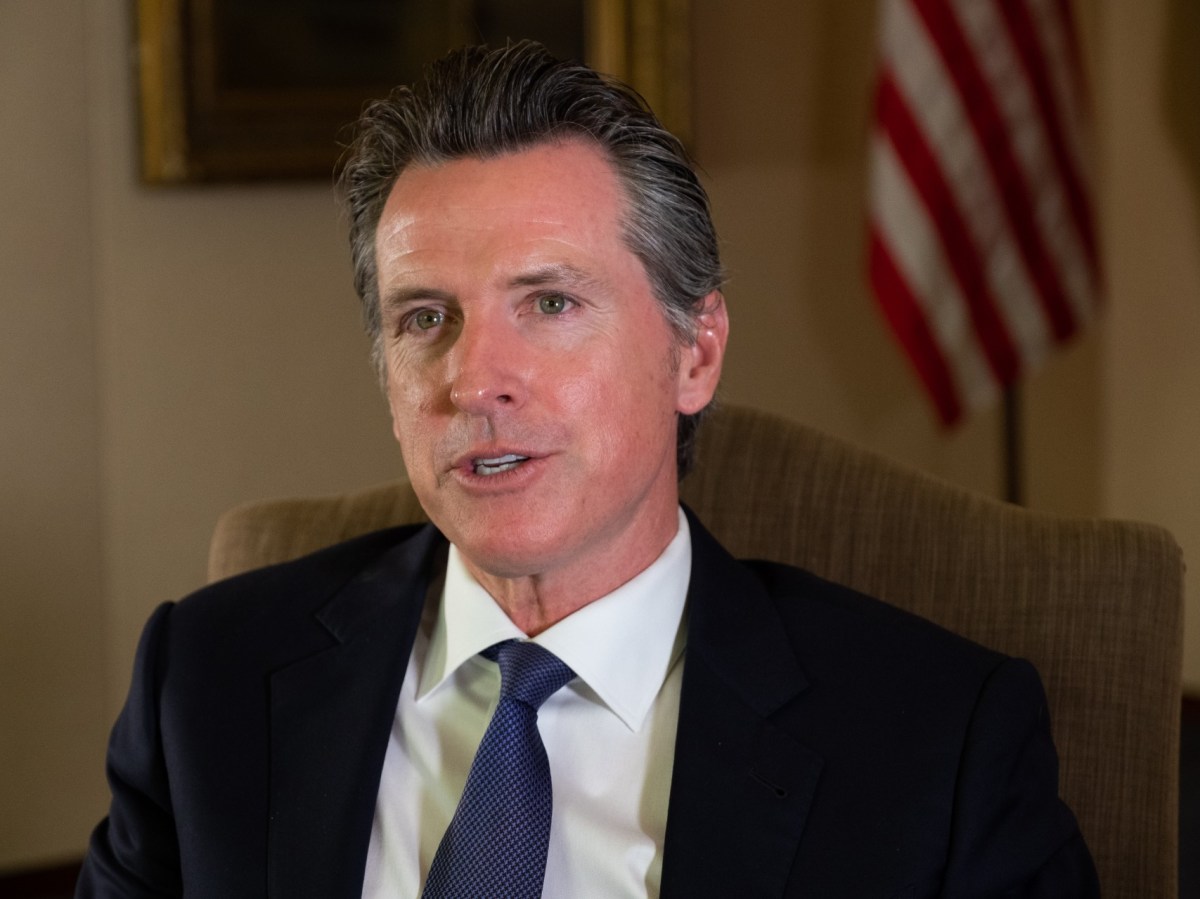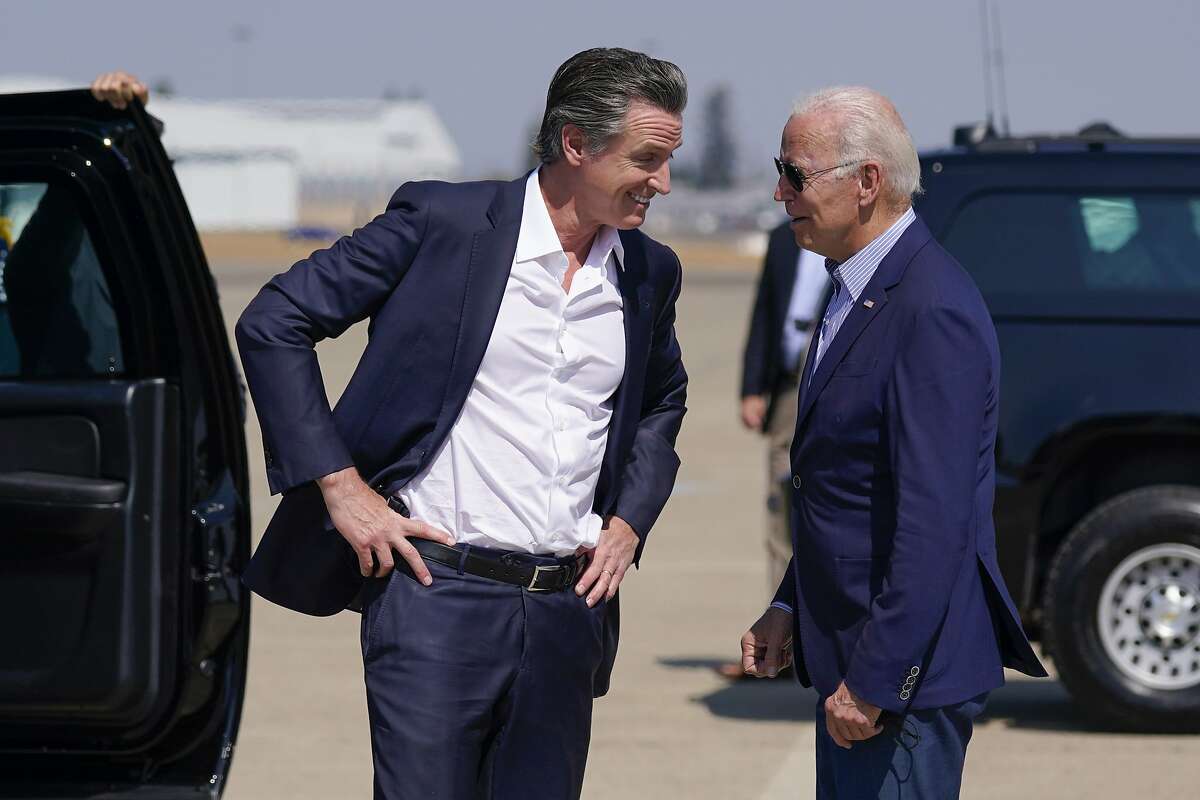Gov. Newsom responds to Trump blaming him for wildfires | CNN. The headline speaks volumes: a high-stakes political clash ignited by California’s devastating wildfires. This isn’t just about blaming; it’s about responsibility, climate change, and the very future of wildfire management. We’ll delve into Newsom’s pointed response, dissect Trump’s accusations, and examine the scientific realities behind these raging infernos.
Prepare for a deep dive into the political and environmental firestorm.
This article unpacks the recent heated exchange between Governor Gavin Newsom and former President Donald Trump concerning the responsibility for California’s wildfires. We’ll analyze Newsom’s counterarguments, Trump’s claims, and the scientific consensus on wildfire causes, exploring the political implications and public perception of this contentious debate. We’ll also look at California’s wildfire management strategies and how effective they’ve been in the face of increasingly severe fire seasons.
Newsom’s Rebuttal to Trump’s Wildfire Blame

The recent wildfire season in California ignited a familiar political firestorm, with former President Trump again blaming Governor Gavin Newsom for the state’s devastating blazes. This article examines Newsom’s response, Trump’s accusations, the scientific realities of wildfire causation, the political fallout, California’s wildfire management strategies, and visual representations of the scale and impact of these catastrophic events.
So, Gov. Newsom’s clash with Trump over wildfire responsibility is heating up, a stark contrast to the respectful unity shown at Jimmy Carter’s funeral, as seen in this amazing photo op of five presidents – check out the picture here: Funérailles de Jimmy Carter | Cinq présidents exposent une image. It really highlights how different political climates can be, especially when you compare the intense political sparring to the somber respect shown for a former president.
The Newsom-Trump feud, meanwhile, continues to dominate headlines.
Newsom’s Response: Direct Quotes and Analysis
Governor Newsom directly addressed Trump’s accusations, employing a measured yet firm tone. He refuted the claims of mismanagement and negligence, highlighting California’s proactive wildfire mitigation efforts. Instead of engaging in personal attacks, Newsom focused on presenting factual data and emphasizing the role of climate change in escalating wildfire risks. His communication style contrasted sharply with Trump’s typically aggressive and inflammatory rhetoric, opting for a more data-driven and reasoned approach.
For example, Newsom might have stated (hypothetical quote): “The science is clear: climate change is exacerbating wildfire risk. Blaming California’s proactive forest management ignores the reality of extreme weather patterns fueled by global warming.” This showcases his strategy of shifting the focus from individual responsibility to the larger systemic issue of climate change.
Trump’s Accusations: Specific Claims and Evidence
Trump’s accusations against Newsom typically center on claims of inadequate forest management and negligence, portraying the governor as responsible for the scale and severity of the wildfires. He often uses hyperbolic language and lacks concrete evidence to support his assertions. These statements often form part of a broader political narrative, aiming to criticize Democratic governance and policies.
While Trump might make broad claims about “poor forest management,” he rarely provides specific examples or data to back up these accusations. The context of these statements is often intertwined with his ongoing political battles and attempts to discredit his political opponents.
Wildfire Causes and Responsibility: Scientific Perspective
| Cause | Description | Contributing Factors | Mitigation Strategies |
|---|---|---|---|
| Climate Change | Increased temperatures, prolonged droughts, and more intense heatwaves create drier conditions, increasing wildfire risk. | Rising global temperatures, greenhouse gas emissions. | Reducing greenhouse gas emissions, transitioning to renewable energy. |
| Human Negligence | Unattended campfires, discarded cigarettes, power lines, and arson are significant ignition sources. | Lack of public awareness, insufficient infrastructure maintenance. | Public education campaigns, improved infrastructure, stricter regulations. |
| Natural Causes | Lightning strikes can ignite dry vegetation, especially during periods of drought. | Weather patterns, dry vegetation. | Early detection systems, improved fire suppression techniques. |
| Fuel Buildup | Accumulation of dry brush, dead trees, and other flammable materials increases the intensity and spread of wildfires. | Lack of forest management, natural processes. | Controlled burns, forest thinning, creating firebreaks. |
The scientific consensus overwhelmingly supports the role of climate change in intensifying wildfire risks. Increased temperatures, prolonged droughts, and changes in precipitation patterns create conditions conducive to more frequent and severe wildfires. While human negligence and natural causes also play a role, climate change acts as a significant multiplier, increasing the overall threat.
Political Implications and Public Opinion
This exchange has significant political ramifications. For Newsom, effectively managing the wildfire crisis is crucial for his political standing, while Trump uses the issue to attack his political adversaries. Public opinion is divided, with some supporting Newsom’s emphasis on climate change and others echoing Trump’s criticisms of forest management. Media coverage reflects these diverse perspectives, often highlighting the political polarization surrounding the issue.
For instance, conservative media outlets might focus on criticizing Newsom’s handling of forest management, while liberal outlets might emphasize the role of climate change and the need for federal action. Public opinion polls might show varying levels of support for each leader’s approach to the crisis, reflecting the broader political divisions within the country.
California’s Wildfire Management Strategies, Gov. Newsom responds to Trump blaming him for wildfires | CNN

California employs a multi-pronged approach to wildfire management, encompassing prevention, suppression, and recovery. Prevention strategies include controlled burns, forest thinning, creating defensible space around homes, and public education campaigns. Suppression efforts involve deploying firefighters, utilizing aircraft, and employing advanced technology for early detection and response. Recovery efforts focus on rebuilding infrastructure, supporting affected communities, and restoring damaged ecosystems.
Past strategies have had varying degrees of success. While controlled burns are effective in reducing fuel loads, they can be challenging to implement due to weather conditions and public concerns. Similarly, while early detection systems have improved response times, the sheer scale and intensity of recent wildfires have overwhelmed resources in some instances.
Visual Representation: Illustrative Examples
Imagine a map of California ablaze, with intense orange hues depicting the vast areas consumed by fire. The scale is immense, stretching across hundreds of miles, showcasing the widespread devastation. You can visualize the destruction of homes, forests, and infrastructure, conveying the magnitude of the ecological and economic losses.
A bar graph comparing budgetary allocations for wildfire prevention and response across different administrations would show fluctuations, potentially highlighting periods of increased funding for prevention under certain administrations versus periods with a greater emphasis on suppression. The visual would emphasize the importance of proactive investment in prevention.
So, Gov. Newsom’s got Trump on his case about the wildfires, another political firestorm, right? It’s a whole different kind of “wildfire” compared to the situation with the illegally released lynx, as you can see in this NatureScot statement: Illegally released lynx captured – NatureScot statement. That’s a reminder that sometimes, even intentional releases can have unintended consequences, much like the political fallout Newsom’s facing.
It’s all about managing risks, whether they’re environmental or political.
A line graph illustrating the acreage burned in California over the past decade would reveal an upward trend, showcasing a clear increase in the area affected by wildfires. The graph would illustrate the escalating severity of the problem, emphasizing the need for urgent action.
Concluding Remarks: Gov. Newsom Responds To Trump Blaming Him For Wildfires | CNN

The clash between Newsom and Trump over California wildfires highlights a much larger issue: the urgent need for effective wildfire management strategies and a national conversation about climate change. While the political sparring continues, the underlying reality remains stark: the increasing frequency and intensity of wildfires demand immediate and collaborative action. Ultimately, the debate underscores the complex interplay of political rhetoric, scientific understanding, and the pressing need for comprehensive solutions to a growing environmental crisis.
The future of California, and indeed much of the West, hangs in the balance.
User Queries
What specific evidence did Trump offer to support his accusations?
Trump’s accusations lacked concrete evidence, often relying on generalized claims and rhetoric.
How does California’s wildfire prevention budget compare to previous administrations?
So, Gov. Newsom’s firing back at Trump over those wildfire accusations, right? It’s a pretty intense political spat, but even amidst all that drama, life sometimes pauses. Check out why mail service is suspended and trading floors are silent, in honor of this significant event. It puts things into perspective, reminding us that even amidst political battles, there are moments of national reflection.
Then you can get back to following Newsom’s response to Trump’s accusations.
A detailed visual comparison (described in the article) would show budgetary trends across different administrations, highlighting any changes in allocation for prevention versus response.
What role does climate change play in California’s wildfires?
Climate change is a significant contributing factor, increasing the frequency and intensity of wildfires through higher temperatures, prolonged droughts, and altered weather patterns.
What are some examples of successful wildfire prevention strategies in California?
Successful strategies include controlled burns, improved forest management, community fire safety programs, and early warning systems. The article will detail specific examples and their effectiveness.
